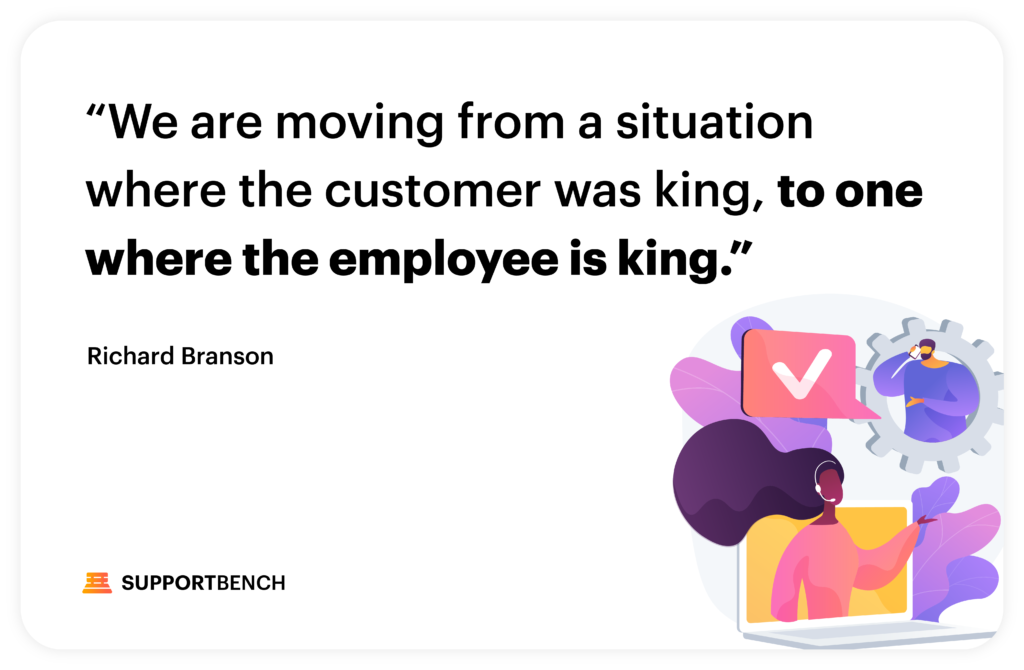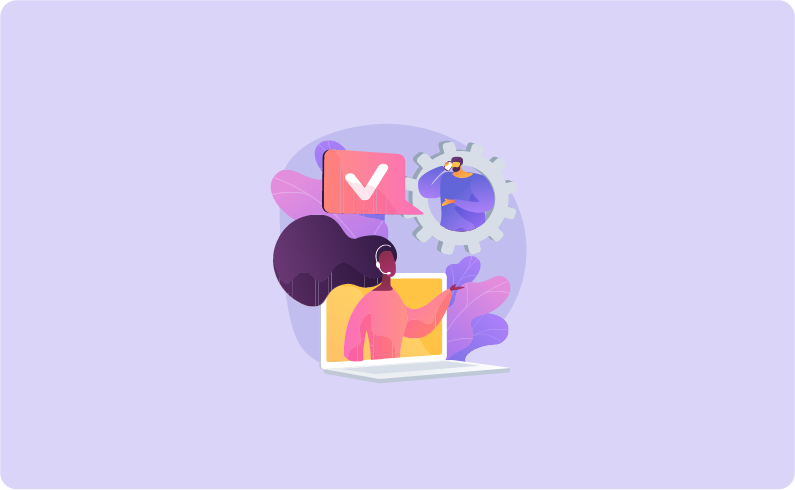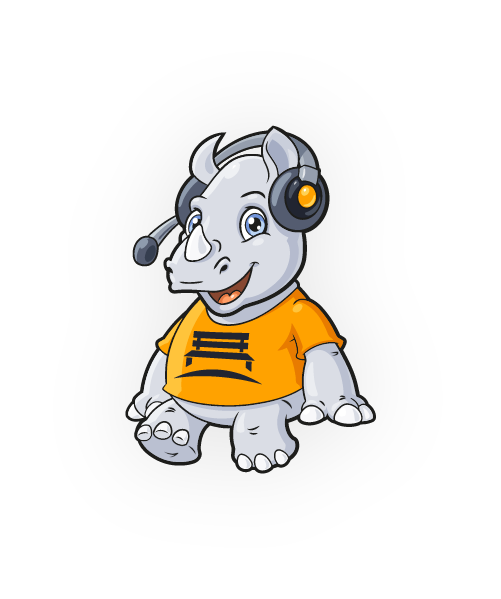Customer support has long been relegated to the aftermath of product or service consumption. But as the B2B enterprise landscape undergoes rapid transformations, the old reactive paradigms are giving way to proactive strategies. Firms are now adopting innovative tools and methodologies that place customer needs and feedback at the center of their operations.
“The best way to predict your future is to create it.” – Abraham Lincoln.
This quote encapsulates the essence of proactive support. The new age of support does not wait for problems to arise; it anticipates and mitigates them. Here’s how.

1. Predictive Analytics & Machine Learning
With the surge in data collection, businesses have abundant data but often lack the tools to extract actionable insights from it. Predictive analytics, combined with machine learning, can analyze this data and forecast potential customer issues. This of course ensures support strategies are agile and effective. And the real beauty of predictive analytics lies in its ability to identify patterns. For instance, if multiple customers are facing similar issues after an update, predictive analytics can alert the support team to this trend, enabling them to either rectify the problem at its source or prepare resources for incoming support requests.
Using the right support platform with and adopting predictive tools will allow you to assess customer data for patterns that might indicate future issues. For instance, if a significant percentage of users seem to have issues after a software update, proactive steps can be taken to rectify this in advance. This ensures your support team is always a step ahead, catering to issues before they escalate.
2. Customer Health Scoring
Traditional support metrics can sometimes overlook the overall health and happiness of your customer base. Health scoring systems offer a holistic view of the customer’s journey and satisfaction. While traditional metrics such as resolution time are valuable, they don’t provide a comprehensive view of the customer’s journey and satisfaction. Health scoring offers a holistic view, enabling a proactive approach to support. And a sudden drop in a customer’s health score might indicate dissatisfaction, even if they haven’t voiced a complaint. This allows support teams to proactively engage with the customer, addressing potential issues before they escalate.
Using a Support tool that is designed specifically for this will allow you to implement scoring systems that evaluate customer interactions, product usage, and feedback. You can then regularly review and adjust these metrics to ensure they’re aligned with customer needs and organizational goals.
With an embedded customer health scoring system, like the one in Supportbench, ensures that customer sentiments aren’t just collected, but acted upon in real-time. By equipping support teams with this data, they can tailor their approaches, strengthening customer relationships.
3. Advanced Knowledge Bases
As per a Forrester report, over 70% of customers prefer using a company’s website to get answers rather than contacting customer support. A robust Knowledge Centered Service (KCS) knowledge base caters to this demand. Today’s customers value self-service. They prefer to find answers at their own pace, making a robust Knowledge Centered Service (KCS) knowledge base indispensable. And, most certainly, a comprehensive knowledge base reduces the need for customers to contact support for minor issues. By analyzing which articles are accessed most frequently, support teams can identify common issues, potentially leading to product improvements.
Using the right support platform, you can regularly update your knowledge bases with fresh content and use analytics to understand which topics users search for the most and ensure you address them. This type of KCS knowledge base will allow you to self-serve efficiently, empowering your customers while reducing the burden on your support staff. It’s not enough to have a static KCS knowledge base. You need a dynamic tool that evolves based on customer interactions, ensuring that content remains relevant and updated, thereby promoting effective self-service.
4. Omnichannel Support
Customers are everywhere – from emails and chat to social media. A Harvard Business Review study found that omnichannel support enhances customer retention and purchase frequency. Customers are no longer confined to a single channel. They reach out via email, chat, social media, and more. Offering consistent support across these channels is essential. And an omnichannel approach ensures that a customer’s journey remains uninterrupted, regardless of the communication channel. For example, if a customer begins a query on chat but later switches to email, their history and context should transition seamlessly.
You can simply create an integrated support system that seamlessly transitions between channels. This ensures that regardless of how a customer contacts you, they receive consistent, top-notch support. Using the right Support platform with features like managing multiple email addresses in one place, to chat widgets and more, you will have true omnichannel support. Beyond just having multiple channels, it would be ideal to have them all integrated, ensuring consistent and efficient communication. This omnichannel approach results in improved customer satisfaction and streamlined support operations.
5. AI-Driven Support Bots
As per Gartner, by 2022, 70% of white-collar workers will interact with conversational platforms daily. AI-driven bots can handle routine queries, freeing up human agents for complex tasks. AI-driven bots are game-changers. They handle routine queries, freeing up human agents for complex tasks, thereby optimizing resources. And an effective bot does more than answer questions—it guides users, offering them relevant knowledge base articles or escalating queries when necessary.
Simply integrate chatbots on your website and within your product interfaces. Ensure they’re equipped to handle frequently asked questions and can escalate more complex queries to human agents.
You absolutely need a system at minimum that integrates with ChatGPT. This will offer you AI bots that not only answer FAQs but do so with a human touch, enhancing all of your customer interactions.
6. Role-Based Security in Support
With increased cyber threats and the importance of data privacy, role-based security ensures that sensitive customer data remains secure. As cyber threats rise, data privacy and protection are paramount. Role-based security ensures that sensitive customer data remains secure, without hampering support operations. Role-based security isn’t just about protection; it’s also about efficiency. By ensuring agents only access data relevant to their roles, it streamlines the support process, eliminating unnecessary clutter.
You can implement systems where access to customer data is granted based on roles. This ensures data security while making sure agents have the information they need. And ensuring customers only see content meant for them and preserving data integrity is so very helpful. By offering granular role-based access will maintain strict data integrity and security protocols.
7. Proactive Outreach Programs
According to American Express, customers are willing to pay more for a better experience. Proactive outreach, like check-in calls or satisfaction surveys, can enhance this experience. Proactive outreach transforms the support paradigm from reactive to proactive, deepening customer relationships. Regular check-ins or satisfaction surveys can uncover hidden customer sentiments. By proactively engaging customers, companies can address minor grievances before they become major issues.
You can schedule regular outreach initiatives. These can be in the form of check-in calls, newsletters, or satisfaction surveys. These support surveys, including custom ones, NPS, and CES, allow businesses to gauge customer sentiments proactively. Through custom surveys and tools like NPS and CES, you are able to stay in regular touch with your customers, ensuring their voices are heard and acted upon.
8. Continuous Support Training
A McKinsey report suggests that organizations with advanced training programs witness a higher growth rate and profitability. The support landscape is ever-evolving. Regular training ensures support teams remain updated, enhancing their efficiency and effectiveness. Beyond product and tool training, focusing on soft skills like empathy and communication is crucial. A well-trained agent can turn a disgruntled customer into a loyal advocate.
Simply schedule regular training sessions for your support team. These should cover product updates, new support tools, and soft skills training. An exceptional B2B Support platform’s datatables feature helps store training data, enabling managers to keep track of training schedules and topics. These act as knowledge reservoirs, documenting training data. Managers can thus keep track of training sessions, ensuring their teams remain at the forefront of support excellence.
9. Feedback-Driven Product Development
In the age of the customer, businesses that adapt based on customer feedback thrive. Customer feedback is gold. By embedding it into product development processes, businesses can ensure they remain aligned with customer needs. Feedback isn’t just about addressing issues; it’s about innovation. By understanding what customers truly want, businesses can introduce features or products that meet these needs, driving growth.
You can have a system to collect, analyze, and implement product feedback. Regularly communicate with your customer base about the changes made based on their feedback.For example, by offering a 360-degree customer overview and reporting, Supportbench ensures feedback doesn’t get lost but instead drives product evolution. With its 360-degree customer overview, Supportbench ensures that customer feedback drives product evolution, fostering innovation and customer loyalty.
10. Emphasis on Emotional Intelligence (EQ)
A Capgemini study found that 70% of customers have a more emotionally connected experience with humans than with digital channels. Training support staff in EQ can create memorable customer experiences. While AI and bots are transforming support, the human touch remains irreplaceable. EQ plays a crucial role in understanding and addressing customer emotions. An agent with high EQ can read between the lines, understanding not just the explicit issue, but the emotions underlying it. This leads to more effective and empathetic support.
You can integrate EQ training into your regular support training curricula and make it a key hiring criterion. Using the right support platform with emotional scoring will help you harnesses the power of AI to provide insights into customer emotions, allowing human agents to respond with empathy. Emotional scoring offers insights into customer emotions, enabling agents to tailor their responses accordingly. This fusion of technology and human touch sets newer support platform apart from the old legacy solutions.
“We are moving from a situation where the customer was king, to one where the employee is king.” – Richard Branson.
This era marks a pivotal transition in customer support. As the lines between product and support blur, businesses like Supportbench are at the forefront of this evolution, embodying the paradigm shift from reactive to proactive. Their commitment to creating the ‘dream enterprise customer support scenario’ is not just a promise; it’s a revolutionary approach that will redefine the support industry.











